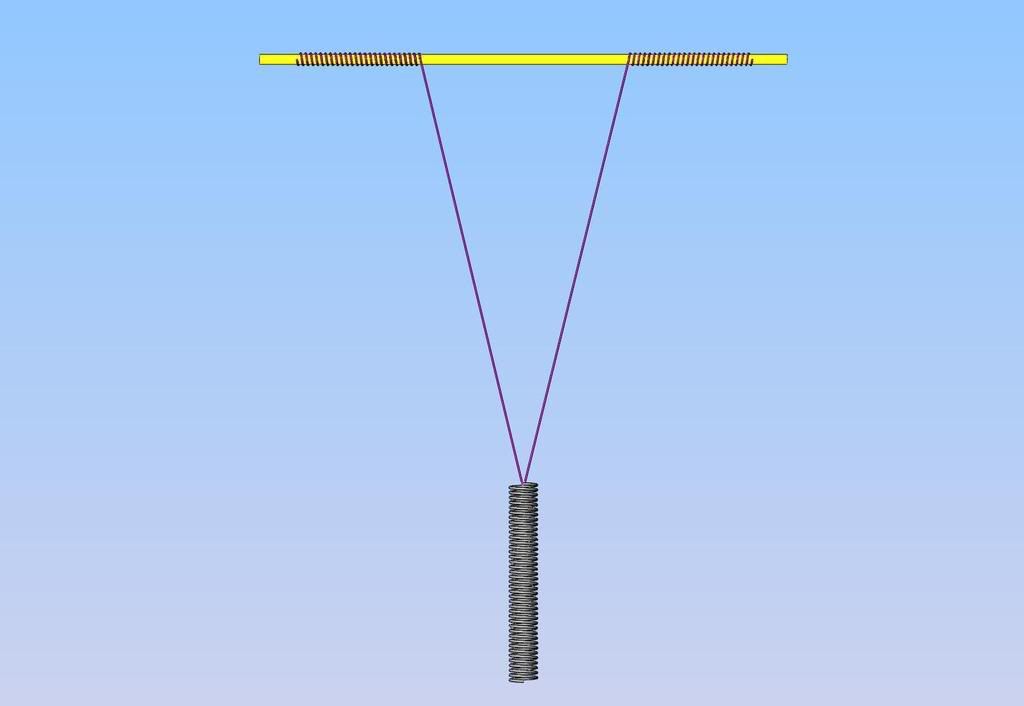- Joined
- Dec 2, 2008
- Messages
- 971
- Reaction score
- 8
No shop time this week. I'm driving to Ft. Gordon, GA to see my grandson, a new U.S.Army 2nd Lt., graduate from Communications School. Last school before deployment.
So I'm thinking..... How could I test the power output or torque of a small air/steam engine. I'm not satisfied with Finger Loads or "ought to be able to do real work" estimates. I want real numbers. Torque in Inch Pounds or whatever you metric people use (gram-mm?). Something for comparison. Not just for bragging rights but for testing the effectiveness of modifications or tweaks.
So far the best I have come up with requires only a pair of digital fishing scales and a strap. With no other equipment and without any calibration required, this device should be able to give an accurate measurement of torque at stall. If you add a tachometer to the mix, you should be able to measure torque at any target speed.
Here's how it works:
Connect the two scales with the strap. When you pull the two scales apart, they should both read the same value...the force that you are applying.
Now attach one of the scales to a fixed point a the same height as the top of the engine flywheel. Lay the strap over the flywheel opposite the direction of rotation. Let the other scale hang from the strap. The flywheel should be able to turn freely. Note the difference of reading of the two scales. It should be very small. This is the only callibration necessary.
Now with the engine running, slowly apply downward force on the hanging scale until the engine stalls. Note the difference in the two scale readings. Subtract the callibration value from above and divide by the radius of the flywheel.
The results is inch-pounds of torque at stall. See the attached for graphic of setup. In this example, the difference is 2 pounds (ignoring the callibration value) and the flywheel has a 1 inch radius so the stall torque is 2 inch pounds.
I'm just thinking. No real testing. Does it sound right?
Jerry
View attachment Torque Test.pdf
So I'm thinking..... How could I test the power output or torque of a small air/steam engine. I'm not satisfied with Finger Loads or "ought to be able to do real work" estimates. I want real numbers. Torque in Inch Pounds or whatever you metric people use (gram-mm?). Something for comparison. Not just for bragging rights but for testing the effectiveness of modifications or tweaks.
So far the best I have come up with requires only a pair of digital fishing scales and a strap. With no other equipment and without any calibration required, this device should be able to give an accurate measurement of torque at stall. If you add a tachometer to the mix, you should be able to measure torque at any target speed.
Here's how it works:
Connect the two scales with the strap. When you pull the two scales apart, they should both read the same value...the force that you are applying.
Now attach one of the scales to a fixed point a the same height as the top of the engine flywheel. Lay the strap over the flywheel opposite the direction of rotation. Let the other scale hang from the strap. The flywheel should be able to turn freely. Note the difference of reading of the two scales. It should be very small. This is the only callibration necessary.
Now with the engine running, slowly apply downward force on the hanging scale until the engine stalls. Note the difference in the two scale readings. Subtract the callibration value from above and divide by the radius of the flywheel.
The results is inch-pounds of torque at stall. See the attached for graphic of setup. In this example, the difference is 2 pounds (ignoring the callibration value) and the flywheel has a 1 inch radius so the stall torque is 2 inch pounds.
I'm just thinking. No real testing. Does it sound right?
Jerry
View attachment Torque Test.pdf





